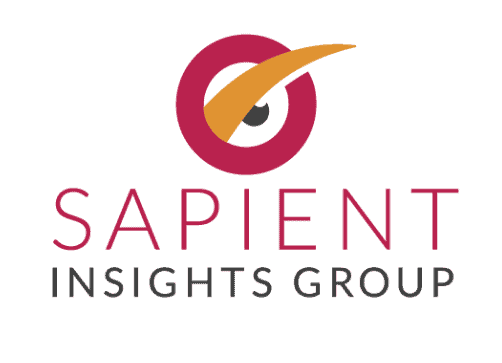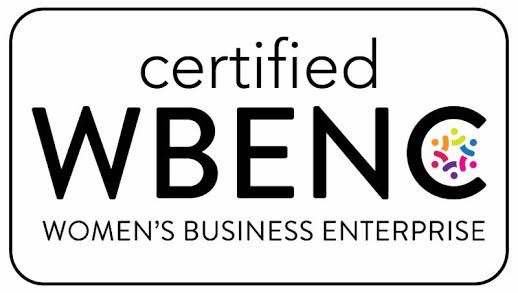Someone once asked me why I do what I do. Much like my father who often said he became a teacher because it was just who he was – he was a teacher – I have often felt that I research and write about HR because that is just who I am – I am a researcher. I start every conversation with a question, even if the answer is not easy or pretty, and even if the world does not always work the way I think it should.
One of my earliest memories as a child was visiting my father at work, driving through the big metal gates, I would scramble to my knees to look out the window in awe. This was in the days before car seats were required and curious children slid around vinyl backseats with abandon. As I peeped over the edge of the door, hands flattened against the cold window, making outlines on the glass, my little heart would pound furiously as the car wound its way through a magical land. Mouth agape, I would take it all in slowly, from the large white towers as tall as city buildings rising all around us, to dark, oddly shaped dragons perched atop the highest peaks spewing fire and steam in every direction, to sparkling fairies floating in the air and gigantic metal monsters lining the road puffing smoke and growling furiously as they encroached on our little car. In the center of this fairy land was a warm yellow office, with metal desks and cushy chairs, and a bowl of butterscotch candies. In reality, my father was a 24-hour, on-call supervisor at a large petroleum storage and distribution station that sat on the edge of Pittsburgh, Pennsylvania, and until I was much older, I never realized how dangerous and difficult that job must have been for him. My father’s job also required him to be on constant standby for work, so that he missed school events, family picnics and holidays on a regular basis. The supervisor’s role was so hard to fill and to train for that my dad and our family were constantly being relocated to new sites to fill gaps and train new teams.
Like many people filling the ranks of the Great Resignation today – when I was 12 years old, against everyone’s recommendations my father quit the well-paying oil job and decided to become a teacher. This single decision completely changed our lives, and his, and taught me my very first lesson on the value of skills, capabilities, the importance of controlling your own destiny. I have no idea what that manager was thinking when my dad handed in his resignation in 1985, but I am sure it was not much different than any manager today who loses a highly skilled employee with no one ready to replace them: Damn!
Although I was never aware of it, the Human Resources (HR) policies and HR technology that my parents interacted with throughout their careers had a major impact on my life as I was growing up and on the decisions that both my mother and father made about their own careers. In my early years all my father’s missed holidays were due to an HR work policy. The need for my family to move every two years, causing me to lose my pet parakeet and my mother to lose her family’s antique plates, was due to poor recruiting and work environments. The regular paycheck that I remember my mother cashing every two weeks before she went grocery shopping and took us to Baskin Robbins 31 Flavors of Ice-Cream was made possible by a piece of early green-screen payroll technology and was critical to my family’s financial wellbeing. When I was 15 and my mother took six months off work on family medical leave to take care of my grandmother, who was dying of cancer, it was made possible because of HR regulations, policies, labor contracts and technology.
If the last few years have highlighted anything for us, it is that work and our personal lives are not nearly as separated as many leaders like to imagine in the corporate world, and Human Resources is the connection between those two worlds. Everything we do in HR and HR Technology has an impact on our business, our employees, and ultimately their personal lives. Sometimes that impact is noble and good, and in other cases that impact can be dangerous and disheartening. In a world where the stories about the abuse of power and technology abound, it can be easy to become cynical about organizations in general, and specifically about the role of HR and HR Technology. There is another side to this story though, and for every bad actor there are hundreds of hard-working HR professionals and technologists doing good every day of the year.
Much like that little girl who poked her head out, too curious to be scared of fire breathing dragons, I am still in awe of the world I see around me; I find beauty in the chaos and believe that as human beings we can create our own fairy tales if we have access to the knowledge, resources, and opportunities needed to create those worlds.
It is that passion for creating a better world that encouraged me to write my first book Introduction to HR Technology: Understand Technology to Improve Performance and Process. This book was written specifically for HR professionals who are trying to figure out how organizational goals can coincide with human goals, and how technology can be responsibly harnessed to reach a better future. In celebration of the book release, Sapient Insights Group, with the support of UKG is offering a complimentary pre-event workshop at the 2021 HR Technology Conference and Exposition. More about the workshop is included below.
Researching Proven HR Practices
Throughout history, the Human Resources function has fought a constant battle to balance its role as employee advocate, business leader and organizational culture keeper. The critical nature of each of these roles demands focus and attention, yet most HR professionals would also say balancing these competing agendas puts them in a no-win situation. I spent my early years as an HR practitioner on the front lines of this battle – watching a multitude of savvy, hard-working HR leaders wage a constant up-hill campaign for the respect this difficult position demands inside every organization.
For the past ten years I have spent my career researching what makes a great HR function, one that can balance competing agendas and achieve the desired outcomes. During this time, three types of organizations emerged:
- Efficient and Effective HR. Organizations that leveraged technology, processes, and resources more effectively than anyone else were well-run HR functions, but all too often were missing a critical focus on organizational outcomes. These organizations were often relegated to compliance-based HR functions.
- Best Practice HR. Organizations led by well-respected HR leaders, heading up major HR transformation efforts were exciting organizations to work with, and they were focused on industry best practices and working with the newest and coolest HR technologies. But, though these organizations thought more about the employee experience, they often did not align their efforts with the reality of the organizational culture or business needs. It was a struggle for these organizations to maintain best practices on an ongoing basis without the business focus.
- Outcome Focused HR. Organizations that achieved outcomes in step with their culture and employees, rather than at their expense or as an aspirational goal; embraced their role as both business leader and employee advocate in a way that their operational colleagues could no longer ignore; and that used their HR Technology to inform business decisions and enterprise strategies, were amazing outcome-focused organizations. They treated HR as their secret weapon and leveraged HR practices and technology in ways that were unique to their organization’s ability to achieve phenomenal achievements.
Creating an HR Technology Community
In the midst of this research, I realized that there was a fundamental issue with how many organizations were leveraging their HR Technology. Even the most forward-thinking HR functions, were using their individual HR Technology as a means to an end, leveraging it for the moment to accomplish a task or achieve a short-term outcome – but they were not viewing it as a dynamic system focused on long term outcomes. These strategic outcome-focused organizations specifically looked at their HR Technology environments as interconnected and hopefully highly self-sufficient environments. These environments were filled with data, workflows, and content more valuable in aggregate than in their individual pieces. A highly connected HR technology environment allowed the organization to work more efficiently but also more thoughtfully – to value the individual employee as part of the whole organization.
One way to think about a highly connected HR Technology environment is to envision your local community – no matter where you live, your community has a mixture of government buildings, businesses, and homes for personal use. In a community, every individual building is important and has a critical role to play, but its value increases or decreases based on the location, quality of the building, and how much that building is used by the members of the community. Some buildings like the police station, fire station and courthouse have specific community-wide services that everyone uses from time to time, much like enterprise applications, while other buildings like businesses or homes, support only a subset of the community and thus are not central but are still valuable, like specific functional applications in marketing or operations. A community stays connected through many factors. For example, the basics of water and electricity are important in most communities and require community standards like voltage and pressure levels, much like basic information sharing, such as primary employee IDs or security configurations that require standards at an enterprise level. Communities are also connected through other services like news outlets or community service groups, entities that help the community run more efficiently and ensure everyone is informed and updated on the latest events, changes or needs. In a highly connected HR Technology environment, these would be your integration points for information passed back and forth to allow the organization to work more efficiently and with more overall knowledge. This analogy could be expanded in multiple ways, but hopefully you can see how treating your HR Technology more like a growing and ever-changing community than a commodity could garner greater overall outcomes.
The first step in understanding an HR Technology environment that works like a self-supporting community is to understand the basics of the current HR Technology industry. HR professionals are at the center of this conversation. They need to change HR at a fundamental level – and to do that they need to understand the resources and technology available to them to help achieve this transition.
Introduction to HR Technology: Understand Technology to Improve Performance and Process’ goal is to:
- Give a clear overview of the past, current, and future HR Technology landscape
- Explore each HR application, and its role in the broader community of HR Technology
- Identify the various HR technology audiences including buyers, users, and support roles
- Provide data on implementation and adoption practices that lead to outcomes
- Share insights on where the market is heading and how emerging technologies will play a role in the future of HR
Along the way the book provides real life examples, case studies, and hands-on activities to help individual HR and HR Technology professionals gain personal knowledge of their own HR Technology landscape. Read more about the new book here.
As mentioned above, an interactive workshop designed to help participants build their own uniquely adaptable HR Systems Strategy is being held at the 2021 HR Technology Conference on September 27, 2021. This workshop will provide data-driven practices, collaborative exercises, group discussions, and a template for successfully building an HR Systems Strategy that aligns with your organization’s individual outcomes. You will also learn key practices for building a business case, executing a strategy, and adapting to a world of continuous change. This is a great way to kick-off a week of learning and education at the HR Technology Conference and Exposition, by creating a personalized framework for how you will leverage all the information, connections, and data you will be gathering over the following week of jam-packed sessions and meetings. Seats are limited, and registration is required to reserve your space.
NOTE: We are constantly monitoring Covid19 and working with conference organizers to ensure safety but understand that the plans are subject to change.


